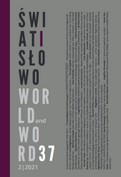The Conservative North – the Phonological Makeup of Northern English Features
The Conservative North – the Phonological Makeup of Northern English Features
Author(s): Agnieszka Kocel-DurajSubject(s): Phonetics / Phonology, Historical Linguistics
Published by: Akademia Techniczno-Humanistyczna w Bielsku-Białej
Keywords: North; Northern English dialect; phonology; phonetics; conservatism; dialectology; linguistic change;
Summary/Abstract: The Northern English dialect has always been a source of curiosities and many contrasts, boggling the mind of linguists who would wish to confine it within some limits of linguistic definitions. Starting from its Old English forefather, Northumbrian, onwards, the Northern dialect has proved to be both influential and resistant to external influences. Its borders defy clear categorization as understood by clear-cut variables, providing more for a fuzzy and volatile framework of relations among different Northern varieties. This is somewhat justified by the very nature of the Northern speech which seems to be a product of as much the history as the culture and tradition so deeply rooted in the hearts of Northerners. Against the backdrop of folklore and popular myths surrounding the local varieties, the Northern tongue has developed its unique features based on two contrasting linguistic trends in morphology and phonology. Among those, one can observe strong innovative and influential tendencies in the area of morphology and much resistance to changes or external influences in terms of phonology. It seems particularly surprising that the phonological analysis of the Northern dialect will very often appear to be an analysis of the dialect of the past with many characteristics having remained unaltered since the old times and being now a symbol of pride and affinity for a particular social group. The aim of this article is to investigate some of those phonological relics, trying to “establish historical continuities” and relating the today’s forms to the past.
Journal: Świat i słowo
- Issue Year: 2/2021
- Issue No: 37
- Page Range: 275-296
- Page Count: 22
- Language: English

